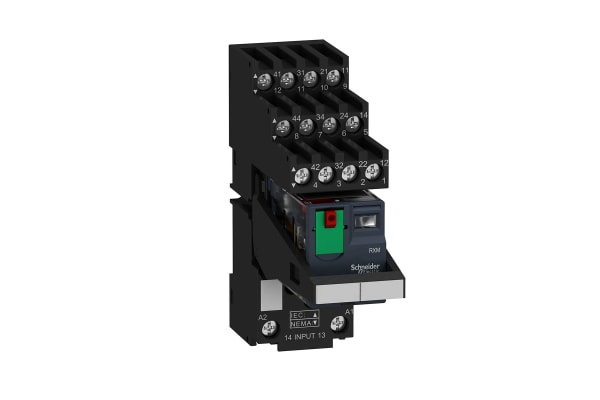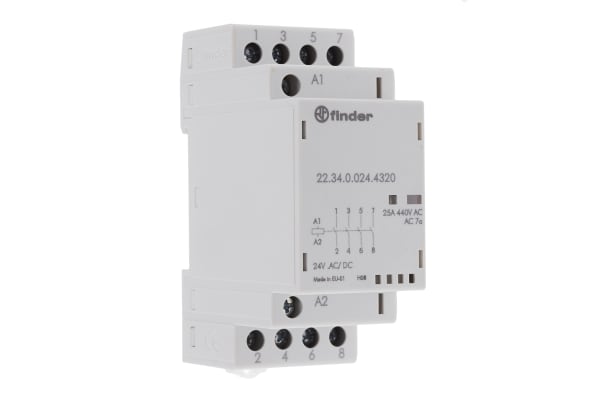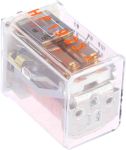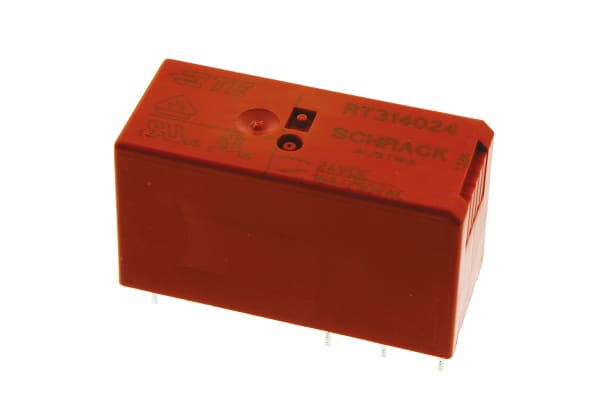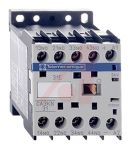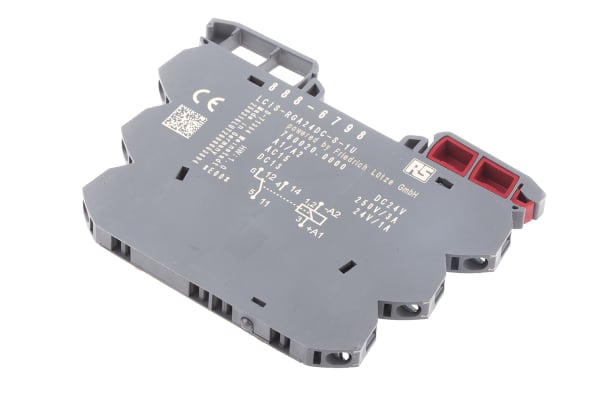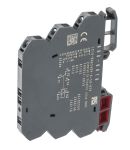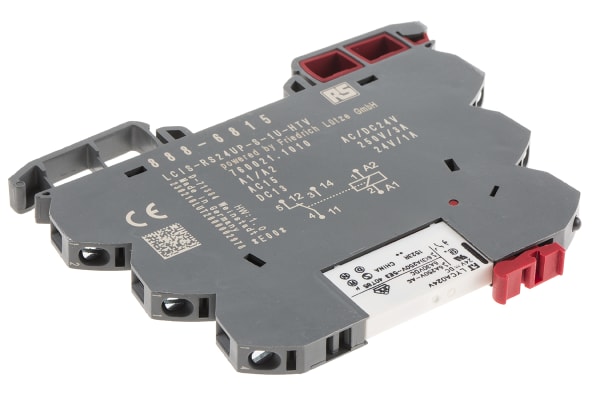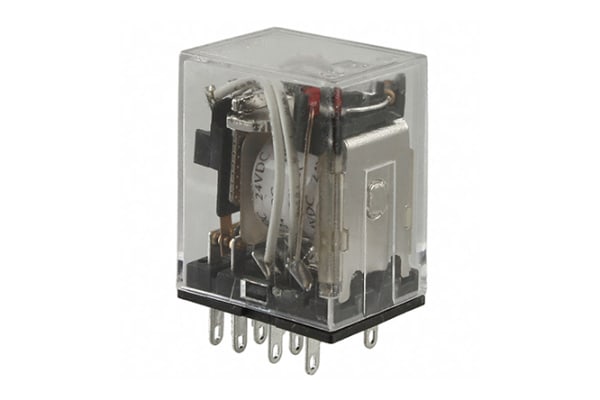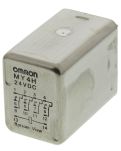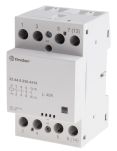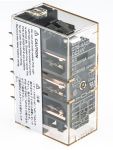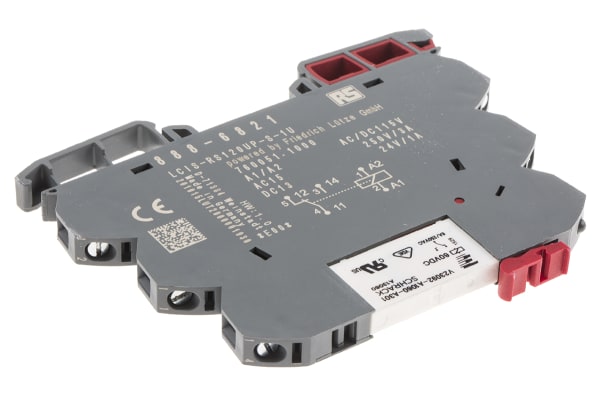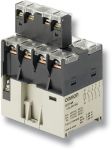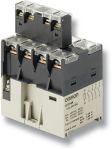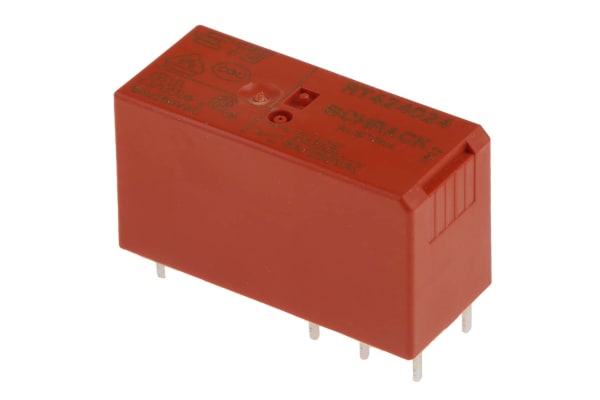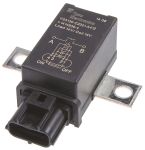Non-Latching Relays
Relays are electrical switches that are operated by electrical impulses with the primary function to open and close a circuit, they can also be referred to as industrial switches. There are 2 main types available, latching and non–latching relays.How do non-latching relays work?Non-latching relays are in a normally closed (NC) position and will stay in this state without power. When power passes through the circuit, the relay switched to a normally open (NO) position by using an internal coil to generate a magnetic force, holding this NO position. Once the current is turned off, it returns to the NC position. This makes non-latching relays well suited to push-button applications like keyboards and micro-controller input buttons.What are non-latching relays used for?Non-latching relays are highly durable and versatile components, making their performance long lasting and suitable for use in a wide range of applications, such as:Automotive enginesHousehold appliancesIndustrial machineryMedical equipmentTelecommunications equipmentWhat is the difference between latching and non-latching relays?Both types of relays in similar in design and function, however, a significant difference between them is that a latching relay will remain in the last position it when it was last powered, whereas a non-latching goes back to its normal position. This makes each more type of relay suitable for different applications. Considerations when selecting a relayWhen choosing a relay, it is important to consider a number of specifications to ensure it is fit for purpose, some factors include:Coil voltage – the required voltage to actuate the switching mechanism. If a voltage is too high this could damage the components, if it is too low then it will not actuate. Contact configuration – This is the state the contacts are in without power. For example SPST, single pole single throw.Contact material – the relay contacts are available in many materials that have certain properties. Common materials are gold, silver, tin oxide and nickel Coil power – the amount of power (watts) the coil operates at. This must match the power in the circuit for correct function. Coil resistance – the amount of resistance (ohms) in the circuit that the coil creates.
-
Schneider Electric, 230V ac Coil Non-Latching Relay 4PDT, 6A Switching Current DIN Rail, 4 Pole, RXM4AB2P7PVS
IDR494,556.35 -
Finder, 24V ac/dc Coil Non-Latching Relay 4NO, 25A Switching Current DIN Rail, 4 Pole, 22.34.0.024.4320
IDR843,210.71 -
Omron, 110/120V ac Coil Non-Latching Relay 4PDT, 3A Switching Current Panel Mount, 4 Pole, MY4H AC110/120
IDR972,749.86 -
TE Connectivity, 24V Coil Non-Latching Relay DPDT, 5A Switching Current, 2 Pole, R10-E1X2-V700
IDR902,473.56 -
TE Connectivity, 24V dc Coil Non-Latching Relay SPDT, 16A Switching Current PCB Mount Single Pole, RT314024 9-1393239-8
IDR1,109,106.86Box (1 Box of 20) -
Schneider Electric, 12V dc Coil Non-Latching Relay DPDT, 10A Switching Current DIN Rail, 2 Pole, CA3KN22JD
IDR904,151.80 -
RS PRO, 24V dc Coil Non-Latching Relay SPDT, 6A Switching Current DIN Rail Single Pole
IDR1,036,627.87Pack (1 Pack of 5) -
TE Connectivity, 12V dc Coil Automotive Relay SPNO, 300A Switching Current Flange Mount Single Pole, 1393315-2
IDR657,240.74 -
RS PRO, 230V ac/dc Coil Non-Latching Relay SPDT, 6A Switching Current DIN Rail Single Pole
IDR1,056,137.41Pack (1 Pack of 5) -
TE Connectivity, 24V dc Coil Non-Latching Relay DPDT, 8A Switching Current PCB Mount, 2 Pole, RTE24024
IDR801,674.27Box (1 Box of 20) -
RS PRO, 24V ac/dc Coil Non-Latching Relay SPDT, 6A Switching Current DIN Rail Single Pole
IDR1,064,318.83Pack (1 Pack of 5) -
RS PRO 24V ac/dc SPDT Interface Relay Module DIN Rail Mount
IDR1,119,386.08Pack (1 Pack of 5) -
Honeywell, 24V dc Coil Non-Latching Relay 4PDT, 3A Switching Current Plug In, 4 Pole, SZR-MY4-N1-DC24V
IDR547,211.13 -
Omron, 24V dc Coil Non-Latching Relay 4PDT, 3A Switching Current Panel Mount, 4 Pole, MY4H 24DC
IDR1,094,632.04 -
Finder, 24 V dc, 24V ac Coil Non-Latching Relay 4NO, 40A Switching Current DIN Rail, 4 Pole, 22.44.0.024.4310
IDR1,162,810.54 -
Finder, 240V ac Coil Non-Latching Relay 4NO, 40A Switching Current DIN Rail, 4 Pole, 22.44.0.230.4310
IDR955,023.45 -
Omron, 24V dc Coil Non-Latching Relay 4PNO, DPST, 10A Switching Current PCB Mount, 4 Pole, G7S-4A2B-E DC24
IDR1,244,834.52 -
Phoenix Contact, 24V dc Coil Non-Latching Relay SPDT DIN Rail Single Pole, 2942153
IDR1,113,407.35 -
RS PRO 115V ac/dc SPDT Interface Relay Module DIN Rail Mount
IDR1,116,554.05Pack (1 Pack of 5) -
Omron, 24V dc Coil Non-Latching Relay, 25 (NC A @ AC), 40 (NO A @ AC), 5 (DC) A Switching Current Chassis Mount, 3
IDR1,092,429.35 -
Omron, 24V dc Coil Non-Latching Relay, 40 (AC) A, 5 (DC) A Switching Current Chassis Mount, 4 Pole, G7Z-4A-20Z-R 24VDC
IDR1,195,431.33 -
TE Connectivity, 24V dc Coil Non-Latching Relay DPDT, 8A Switching Current PCB Mount, 2 Pole, RT424024 6-1393243-8
IDR635,528.51Box (1 Box of 20) -
Finder, 24 V ac, 24V dc Coil Non-Latching Relay 4NO, 63A Switching Current DIN Rail, 4 Pole, 22.64.0.024.4310
IDR1,281,860.69 -
TE Connectivity, 12V dc Coil Automotive Relay SPNO, 190A Switching Current Flange Mount Single Pole, V23130C2021A412
IDR1,200,885.61



